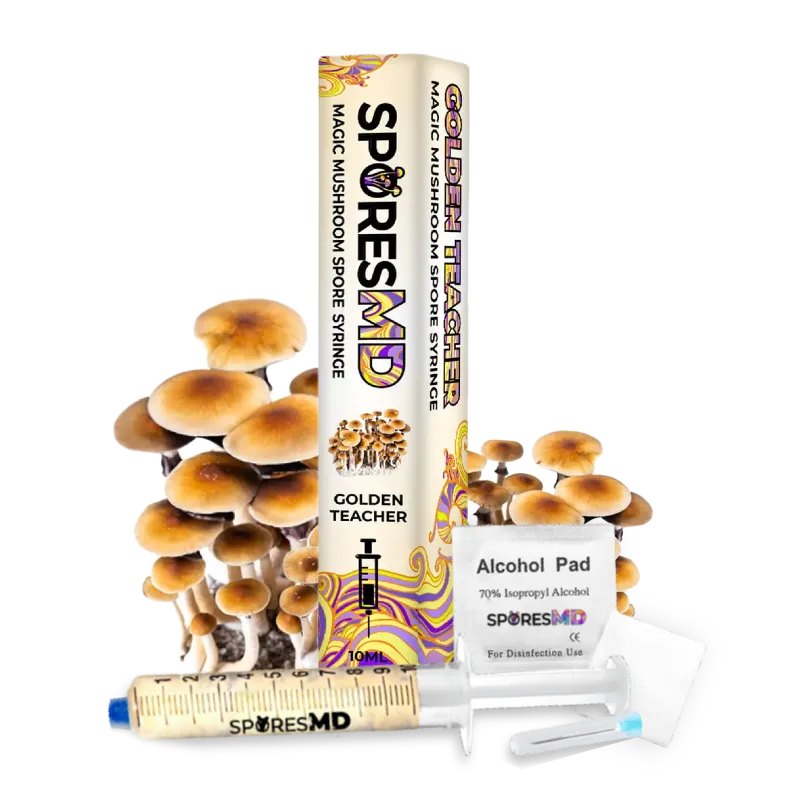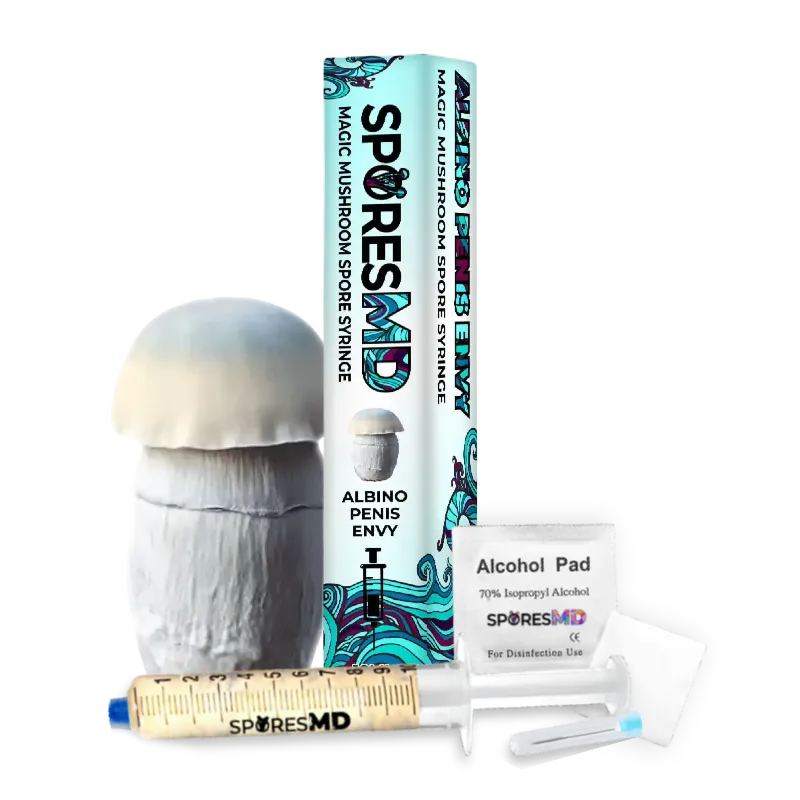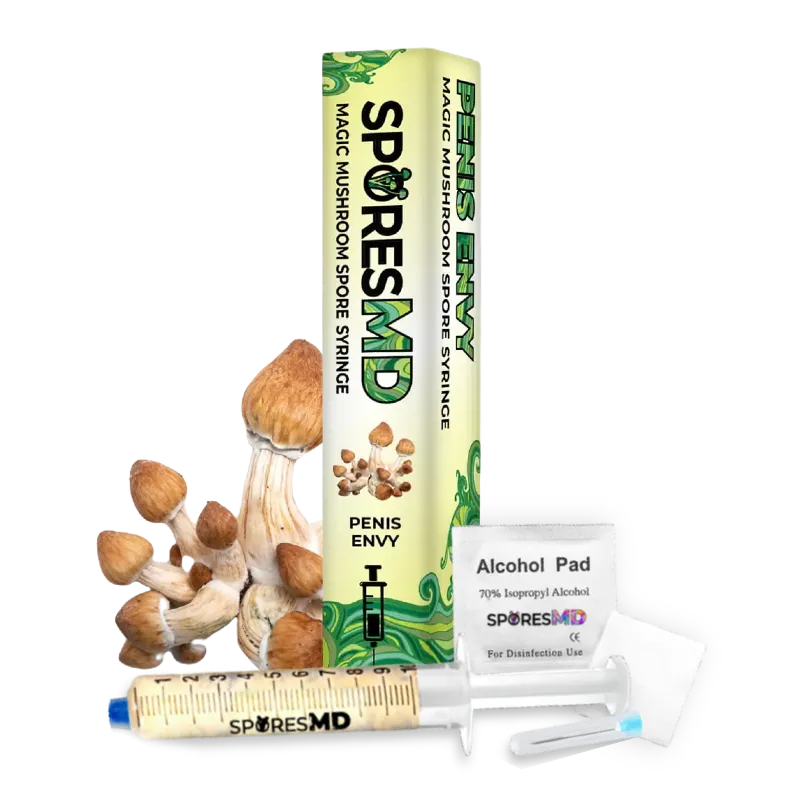Injecting mushroom spores is a fascinating process. It’s crucial for cultivating mushrooms. First, you’ll need to understand the basics. Mushroom spores are like seeds for plants. They are essential for growing mushrooms in controlled environments.
To start, prepare a clean workspace. Next, ready your mushroom grow bag. Then, evenly distribute the spores in a syringe. Inject the spores accurately into the substrate. Finally, ensure proper colonization post-injection.
Mastering this process opens doors to mycology and mushroom cultivation. Whether you’re interested in oyster mushrooms or medicinal strains, knowing how to inject spores is your first step. Let’s dive into the specifics and explore each stage in detail.
Key Takeaways
- Understand the Basics: Mushroom spores are essential for growing mushrooms, similar to seeds in plants. Adequate knowledge of their role is crucial for successful cultivation.
- Prepare a Sterile Environment: A clean workspace, sterilized substrate, and sterile equipment are vital to prevent contamination and ensure optimal growth conditions.
- Distribute Spores Evenly: Proper shaking of the spore syringe ensures even distribution of spores, enhancing the chances of successful inoculation and growth.
- Accurate Injection Techniques: Correctly injecting spores into the substrate and sealing the injection site prevents contamination and promotes healthy colonization.
- Post-Injection Care: Maintaining ideal temperature and humidity levels is crucial for successful spore colonization and mushroom growth. Regular monitoring helps address any issues promptly.
- Troubleshoot Common Issues: Identify and address uneven colonization and contamination by ensuring proper technique and adherence to sterile conditions throughout the process.
Gathering Necessary Materials
Successful spore injection begins with having the right materials. This ensures sterility and optimizes growth conditions.
Sterilized Substrate
Sterilized Substrate: Essential for colonization, the substrate can include rye-Vermiculite mix or grain spawn. The choice depends on the mushroom strain you intend to cultivate. Check the substrate bag for damages before use. According to professional guidelines, damaged bags can lead to contamination, hindering spore development (source).
Spore Syringe
A Spore Syringe contains millions of mushroom spores in a sterile solution. Each syringe typically has a 20 ml capacity. Famous for its versatility, it suits various strains like oyster or medicinal mushrooms. Before usage, shake it to evenly distribute spores for optimal inoculation. Reliable brands provide sterile needles and alcohol wipes with each purchase (source).
Sterilization Tools
Prevent contamination using essential Sterilization Tools. Disinfectants like Bacillol or 70% Isopropyl Alcohol are recommended. Sterile gloves and event hand sanitizers ensure cleanliness. Use an alcohol lamp to sterilize the needle before injection. Seal the injection site with cloth tape for an extra layer of protection. According to fungal cultivation experts, sterile protocols minimize the risk of bacterial interference, leading to successful growth (source).
Preparing the Work Area
Disinfecting Your Workspace
Thoroughly disinfect your workspace to prevent contamination. Use Bacillol, applying it on the worktable and allowing a reaction time of 3 minutes. For your substrate bag, use 70% alcohol, waiting for 2 minutes before proceeding. Ensure personal hygiene by showering, wearing clean clothes, and disinfecting your hands or wearing sterile gloves. This detailed preparation minimizes the risk of contamination and improves the success rate of mushroom spore injection.
Organizing Tools and Materials
Carefully organize your tools and materials to streamline the inoculation process. Gather all necessary items within arm’s reach to maintain focus and efficiency. Essentials include sterile gloves, a surgical mask, alcohol wipes, and a butane torch for needle sterilization. A well-organized setup reduces interruptions and helps maintain a sterile environment, enhancing the overall injection process.
Preparing the Spore Syringe
Ensuring Even Spore Distribution
Shake the spore syringe using a vigorous motion to achieve even spore distribution. Ensure spores and the sterile solution mix well by using a side-to-side motion. Vigorously shake for seconds. This step ensures that millions of spores found in the syringe get equally dispersed for optimal inoculation. Spore syringes are vital for cultivation as success depends on equal distribution.
Handling and Safety Tips
Prepare a clean environment to avoid contamination. Disinfect your hands or wear sterile gloves before handling the syringe. Use bacillol on the worktable and 70% alcohol on substrate bags; allow 2-3 minutes of waiting time for effectiveness. Securely attach the needle to ensure proper safety, ensuring the Luer lock on the syringe is in place. Always work in a well-lit space.
Injecting Mushroom Spores
Proper spore injection is crucial for successful mushroom cultivation. Accurate injection techniques and best practices ensure optimal growth conditions.
Injection Techniques
- Insert the Needle: Penetrate the disinfected area of the substrate bag with the needle. Ensure it reaches the middle of the bag for even distribution.
- Release Spore Solution: Push the plunger slowly, dispensing between 10-20 ml into small bags (2.5 L) and 20-30 ml into larger bags (4.5 L).
- Seal the Injection Site: Close the puncture with cloth tape immediately to prevent contamination.
- Flame-Sterilize the Needle: Ignite the needle with an alcohol burner for 15 seconds. Cool it down by dispensing a small solution droplet.
- Gentle Bag Shaking: Gently shake the bag post-injection to evenly distribute spores without damaging the substrate.
- Storage Conditions: Store spore syringes at 2°C-8°C (35°F-46°F) to maintain spore viability.
Implementing these steps enhances the chances of successful mushroom growth.
Post-Injection Care
Proper post-injection care ensures optimal spore colonization and successful mushroom growth. Focus on creating an ideal environment for the spores to thrive.
Ensuring Successful Colonization
Maintain ideal temperatures between 70-75°F (21-24°C). This temperature range facilitates rapid mycelium growth. Ensure a humidity level of 85%. Use a humidifier or regularly mist the area to keep the environment moist. Avoid disturbances and light exposure. Store bags in a dark, stable environment to foster undisturbed growth.
Monitoring and Adjusting Conditions
Check for mycelium growth every 2-3 days. Look for white, fluffy strands indicating healthy colonization. Monitor CO2 levels. Excessive CO2 can inhibit growth, so ensure proper ventilation without overly drying out the environment. Adjust conditions promptly, ensuring continuity of the ideal parameters. Employ a digital temperature and humidity monitor for accuracy.
Common Issues and Troubleshooting
Troubleshooting common issues during mushroom spore injection helps ensure successful cultivation. Focus on addressing uneven colonization and contamination to optimize growth.
Uneven Colonization
Uneven Colonization can occur if spores are not distributed properly in the substrate bag. Ensure to shake the spore syringe vigorously before injection to promote even spore dispersion. Inspect the bag for any compacted areas; gently massage these spots to aid spread. Maintain consistent temperature and humidity levels; variations can disrupt growth rates. According to a study by the Centre for Mycological Research, maintaining stable conditions boosts successful mycelium colonization.
Contamination Signs
Contamination results in unexpected colors or foul odors in the substrate. Look for early signs like green, black, or red patches, which indicate mold or bacterial presence. Discoloration often suggests contamination. Act promptly by isolating infected bags; delaying can affect healthy substrates. Using 70% isopropyl alcohol or Bacillol for cleaning surfaces and utilizing sterile gloves decreases risk. The International Journal of Mycology notes over 60% of contamination arises from insufficient sterilization practices.
Conclusion
Mastering the art of injecting mushroom spores can open a world of possibilities in mushroom cultivation. By adhering to strict sterilization protocols and following precise injection techniques, you’re well on your way to achieving successful mushroom growth. Remember to maintain the right environmental conditions and monitor your substrate bags regularly to ensure healthy colonization. With these practices, you can minimize contamination risks and enjoy the rewarding experience of growing your own mushrooms. Keep exploring and refining your skills, as each cultivation cycle offers new insights into the fascinating world of mycology.

![How to Inject Mushroom Spores: 7 Essential Steps for Success [Step-by-Step Guide]](https://sporesmd.com/wp-content/uploads/2024/02/how-to-inject-mushroom-spores-featured-image.webp)



